Don't wanna be here? Send us removal request.
Text



The official poster of The general Khleang moeung animated film.
#gkmmovie#SmartAxiata#thewillvfx#spacemonkeykh#OknhaKhleangMoeungAnimation#The general khleang moeung
2 notes
·
View notes
Photo
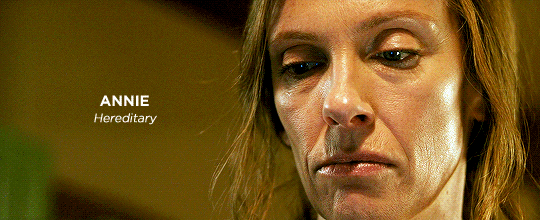

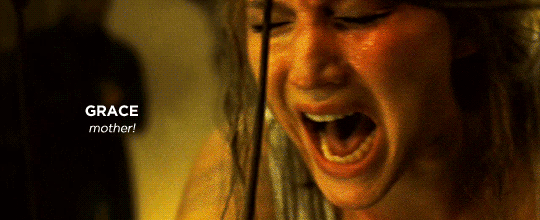
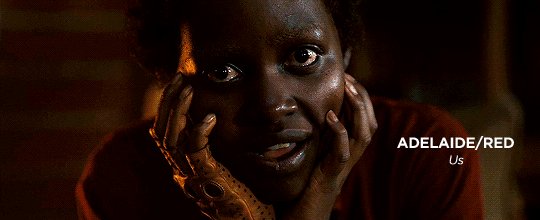
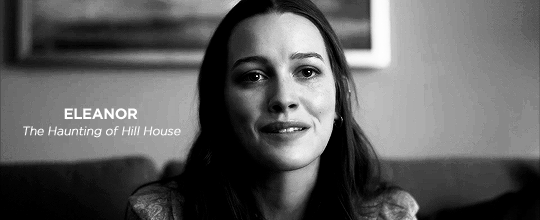
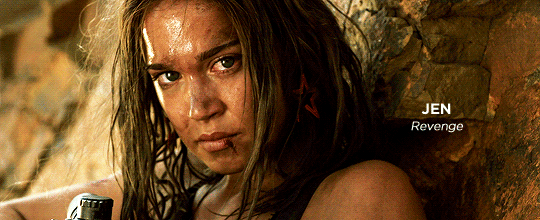
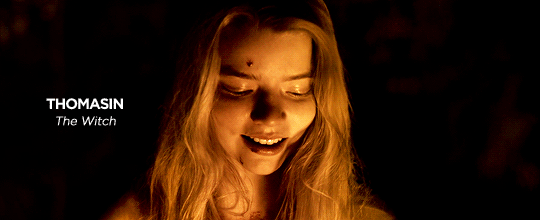
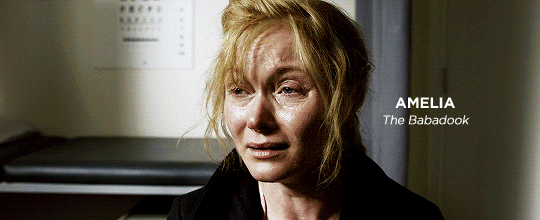
21st century horror + “unhinged” female leads
“Perhaps what we’re witnessing in horror right now is not a commentary on a single anxiety, but a culmination of all the anxieties that exist in culture—the shit that’s built up, affecting generation after generation, especially women … who’ve internalized the brunt of trauma for so long and are only now able to channel it. The rage that stems from internalising trauma (while coddling men) … is perfectly visualised by Toni Collette literally crawling up the walls in Hereditary.” — Ryan Bradford
“This is what horror tells us—that in the collective unconscious of all women are psychic wounds so deep and raw that even to brush against them is to become a conduit for their primal violence… We self-censor our every reaction, debating endlessly with ourselves over which thoughts are permitted and which are forbidden or unclean… Perhaps that’s why, after so long spent boiling within us under such terrible and unrelenting pressure, women’s desires hold such power to fascinate and terrify.” — Gretchen Felker-Martin
31K notes
·
View notes
Text
Pros and Cons of Different Points Of View
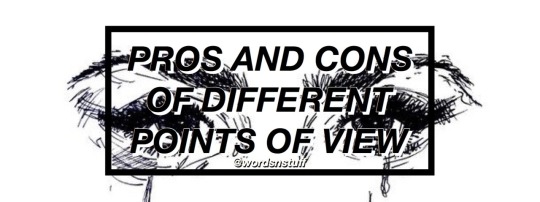
Objective Point Of View
“With the objective point of view, the writer tells what happens without stating more than can be inferred from the story’s action and dialogue. The narrator never discloses anything about what the characters think or feel, remaining a detached observer.”
Pros
Adds a potentially useful suspense to the events of the story, as the reader cannot predict as easily what will happen next based on the characters’ internal thoughts.
More direct with the events and description of elements of the story, such as setting and the rate at which time passes in the story, which can be muddled in stories in points of view like third person, where these details can be overshadowed by descriptions of thoughts, feelings, backstory, etc.
Descriptions can come across more fluidly and make the actual images and scenes visualize more easily in the readers head. It is the closest point of view to a movie, as films don’t typically focus on what the audience is explicitly being told, but what they see and what they can deduce from the images in front of them.
Cons
This point of view can be more difficult to relate to as readers, due to the story being told and described in a more detached way, rather than being pulled into the story in a way that makes them feel like a character themselves.
You have to really utilize subtext and context with this perspective. You can’t convey the story’s tone through any of the characters’ thoughts or feelings, so you have to rely completely on the pure course of events to tell the story and grip the reader emotionally.
This makes it really hard to connect to the characters and understand their motivations unless the reader is looking really deep into the context and reading between the lines.
Third Person Point Of View
“Here the narrator does not participate in the action of the story as one of the characters, but lets us know exactly how the characters feel. We learn about the characters through this outside voice.”
Pros
This is pretty much exactly like first person narration, but with different pronouns. Instead of “I walked to the store” it’s “he walked to the store” and eliminates the reader’s potential skepticism of the narrator’s reliability while still telling the story in the same words.
You have the potential to divulge more about what other characters are thinking or doing at any point in time because you’re not technically limited to one character.
It’s a pleasing way of telling a story. It doesn’t take too much analysis for the reader to imagine how the perspective could be tainted by emotion in some way. It doesn’t require too much brain power to read. It flows nicely.
Cons
This isn’t as much a con as it is a warning. Your characters need to be rounded and diverse if you’re going to write a story in third person. If they all share the same characteristics and motivations and emotions, your story will fall flat super fast.
Third person has a viewpoint character, typically. If you want to be able to tell whatever you want about whomever you want, then you need an omniscient point of view. Third person usually focuses on a main character and occasionally shares about other characters when it serves the story.
Second Person Point Of View
“Second person is a point of view (how a story is told) where the narrator tells the story to another character using the word ‘you.’ The author could be talking to the audience, which we could tell by the use of 'you,’ 'you’re,’ and 'your.'”
Pros
Your reader feels what you write so much more intensely, because you’re referring to them specifically. It’s a reader insert point of view. You’re speaking directly to them.
Action and romance are really good genres for this, I imagine, because those are stories where readers often put themselves in the place of the protagonist anyway, so second person would amplify that to your advantage.
There works so well when it’s done correctly, and if you take the time to practice with it and master the pacing and what really makes a reader tick in second person point of view, it will grab that reader and pull them very, very quickly.
Cons
You usually have to be really really vague about descriptions. If your reader doesn’t have blonde hair and hazel eyes, but your character does, this will really put a damper on their experience because every time you describe how their blonde hair blows in the wind, they’ll detach from the story.
Sometimes your reader may feel confused because second person is a very hard point of view to read about at first. It takes some time to get used to. A lot of fanfiction (mainly reader-insert) is second person point of view and I’ll be the (not) first to say that it took so time to adjust to, at least for me.
First Person Point Of View
“In the first person point of view, the narrator does participate in the action of the story. When reading stories in the first person, we need to realize that what the narrator is recounting might not be the objective truth. We should question the trustworthiness of the accounting.”
Pros
Is not limited to the point of view of the main character, as displayed in books such as The Great Gatsby by F. Scott Fitzgerald.
A certain connection between the reader and the character can create a sense of authenticity and intimacy between the reader and the story as a whole.
The themes and motives behind the story can become easier to decode, as they are disclosed in a more clear and direct manner.
The character can be easier to understand and relate to, as everything is being told by them, with their bias and interpretation included.
It puts the reader inside of the story rather than having them watch from the outside. The intimate details and description can make put them in a position to experience the story from inside and therefore make the story mirror their reality in a way.
Cons
It may become difficult for the reader to differentiate who is speaking to them in the story, as many sentences will begin with “I” or “we” and create a repetitive narration and lose the reader alone the way.
The reader may become bored with hearing the story from only one’s perspective. The style in which the story is told {the adjectives, the themes, the personality} may not vary enough to keep them entertained.
Imagery can be difficult to pull off in this point of view because the writer may get into the habit of telling the reader what is happening instead of showing them through smooth interjections of descriptive vocabulary.
The writer may experience a dependence on dialogue to try to compensate for lack of description of events, and the reader may lose track of story details that may become imperative to events later in the scene/story.
This makes it a lot easier to pull an “unreliable narrator”, as first person is only the perspective of a person, rather than the story told from a purely factual position.
Omniscient & Limited Omniscient Points of View
“A narrator who knows everything about all the characters is all knowing, or omniscient. A narrator whose knowledge is limited to one character, either major or minor, has a limited omniscient point of view.”
Pros
This makes it really easy to include details about many characters that you wouldn’t be able to from the perspective of a single person.
You are writing as yourself. You are the author, you have all the information to give the reader, and you get to give it in the least convoluted way you could ever desire, and in your own words. In any other point of view, you are pretending to be somebody else, even in third person, so this allows you to really demonstrate your unique voice as a writer and express your own style.
You can write fast paced scenes without the reader questioning what an individual character is feeling all the time. You can slip in whatever information you want at whatever point you wish and it just sounds natural to the reader.
Cons
Plot twists are ten times more difficult because there’s no reason why anything would be a surprise. Your reader technically has access to all information and foreshadowing required to predict what will happen next, so if you’re planning a big surprise, prepare for a challenge delivering it.
Keeping the focus on one subject is more important when you’re writing for younger, less experienced readers. You have to have a protagonist and a linear story for them to follow, which can be tricky with omniscient point of view. It’s important to keep your audience in mind if you’re going to choose any point of view, but especially this one.
These pros and cons are subjective, depending on what you are intending to convey in your story. Please consider this with a grain of salt and take the detail and unique qualities of your own work into account when using this resource. Not all pros and cons in this piece will apply the same to every story, and that is something to keep in mind. I hope this will be useful to you all. Cheers!
Ext. Sources ~ x x x x
Support Wordsnstuff!
If you enjoy my blog and wish for it to continue being updated frequently and for me to continue putting my energy toward answering your questions, please consider Buying Me A Coffee.
Request Resources, Tips, Playlists, or Prompt Lists
Instagram // Twitter //Facebook //#wordsnstuff
FAQ //monthly writing challenges // Masterlist
MY CURRENT WORK IN PROGRESS (Check it out, it’s pretty cool. At least I think it is.)
4K notes
·
View notes
Text
It’s Ya Girl’s College Scholarship Masterpost
Hello internet civilians! As some of you may or may not know, my name is Dana and I am a high school senior that is ALWAYS on the prowl for trying to get to college for as cheap as possible. I’ve come across 1000′s of scholarships that I simply don’t qualify for, so I thought “hey, why not share these with random people on the internet that don’t know where to start?” You asked the question and only answers you shall receive.
Please remember to credit me for this masterpost because I spent a lot of time and energy on it :)
PLEASE ALSO REMEMBER THAT A SCHOLARSHIP IS WORTHLESS IF YOU DO NOT APPLY FOR IT.
SO DO NOT JUST SAVE THIS POST IN YOUR DRAFTS AND NEVER USE IT. ACTUALLY WRITE AN ESSAY OR FOUR
Scholarship Databases:
fastweb.com
cappex.com
http://www.uncf.org/
http://schoolsoup.com/
http://www.tuitionfundingsources.com/
http://hsf.net
https://www.collegeboard.org/
http://apiasf.org/
http://hispanicfund.org
www.maldef.org
www.supercollege.com
www.finaid.org
www.collegeispossible.org
www.mach25.com
http://chegg.com
www.HBCUmentor.org
“Big” Scholarships That Cover: Tuition, Room Board, Books, or Full Scholarships
Gates Millenium
Posse Foundation
Coca-Cola Scholarship
AXA Scholarship
Dell Scholars Application
Ron Brown Scholarship Program
Burger King Scholars
Horatio Alger Scholarship
Questbridge
Voice of Democracy Scholarship
Chick Evans Caddie Scholarship
Hertz Foundation Graduate Scholarship
+ 111 Full Tuition Scholarships to Universities!
Scholarships
(**Some May “Prefer” Minorities, But That Does Not Mean You Should Still Not Try For It**)
http://blackstudents.blacknews.com/
May/June 2015 Scholarships
http://www.fastweb.com/college-scholarships/articles/the-2015-scholarships
http://blackstudents.blacknews.com/opportunities/
Scholarships for Minorities: White House Edition
LGBT Scholarships
Buick Achievers Scholarships
Cultural Diversity Scholarships
50 LGBT Scholarships - 1 Application
50 Top Scholarships for 2014/2015
National Association of Black Journalists
7 Prestigious Undergrad Scholarships
The Jackie Robinson Foundation
500+ Scholarship List
Masterlist of College Minority Scholarships
4 Scholarships That Are Easy To Apply For
Do Something Campaigns
Need help on Scholarship Motivation?
HOW TO WIN A SCHOLARSHIP: FROM A GIRL WHO’S APPLIED FOR 300+ AWARDS
12 Tips on Winning Scholarships
Skip these 6 Scholarship Errors
Students with Average Grades Can Win Scholarships!
4 Ways To Make Your Scholarship Essay Stand Out
Get Rid of Student Loans!
How I Got Rid of 60k Student Loans in 3 years By Living in a Hotel
10 Steps To Minimize Loans
Minimize Student Loans
Know How Much Student Loans To Take
Paying For College
Miscellaneous Articles That Are Good Reads
Out-of-State Colleges That Offer In-State Tuition
5 Myths About Financial Aid
How To Negotiate A Better Financial Aid Package
How To Read A Financial Aid Letter
How To Deal With A Low SAT Score
Great Schools That Accept Low SAT Scores
How To Demonstrate Interest in a College
I Told Harvard I Was An Undocumented Immigrant. They Gave Me A Full Scholarship.
Credit: @jesussbabymomma
178K notes
·
View notes
Text
How To Write A Good Plot Twist
Here’s a guide for all you writers who like to screw around with their readers;)
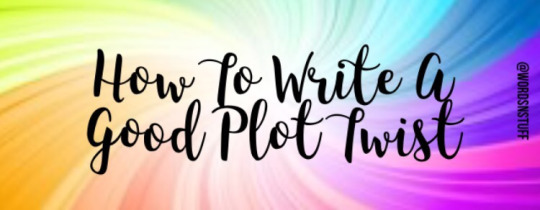
1. Give it an open ending.
Not necessarily the easiest, but one of the most practical plot twists is the ambiguous ending. It is a good one to use if you don’t want your overall storytelling to be affected by your plot twist too much.
When you leave a story open ended, this means you don’t explain how the story ends, but rather, you leave it up to the imagination of the reader.
The audience doesn’t know what happened to the characters in the end, but based on the story and what has occurred thus far, they can wager a guess and infer an ending in order to satisfy their need to tie up the loose ends in their minds.
2. Use an untrustworthy narrator.
This is a great technique to use because people are often conditioned to take the narrator’s word when reading a story. The narrator is the perfect character to use in order to confuse the reader, and maybe give them hints and suggestions that will lead them to a completely different conclusion from the one that you are setting up for your plot twist.
If you are going to use this method, however, it’s important to not make it glaringly obvious that the narrator is untrustworthy in telling the story. You should be foreshadowing it subtly, but the story that the narrator is telling must also be completely believable.
When used effectively, the reader will be very surprised at the plot twist, but will also have a feeling of “I should have seen it coming,” as well.
3. Reverse character roles.
A pretty straightforward approach, this is when your plot twist consists of either the hero turning into the villain or vice versa.
Sometimes it comes off forced when the character becomes a polar opposite of what he or she has been throughout the story, so it is best to give these characters some traits that would make their transitions believable.
4. Throw your reader into the mix.
A good way to make plot twists work well is by starting the storytelling in the middle of some type of climax. When you do this, you are giving the reader an immediately intriguing plot that could really go anywhere, because there is no backstory to reference.
The lack of prior information about the situation given to the reader gives the writer a lot of freedom with the plot twists that he or she plans.
5. Try an unexpected kill.
Your readers might hate you for a short while, but this technique provides an unexpected plot twist.
Killing off one of the main characters in the middle of the story is something that always comes as unexpected. Readers pick up on who the key characters are early in the story if they are well-developed, and they attach to these characters early on in the story.
Having one of these main characters die really twists things into an unexpected direction, because the reader is already looking forward to what will happen to this character at the end of the story. Finding out that this character will not be playing any type of role in the story’s ending is always a good shock for the reader.
These are only a few suggestions. There are many other great ways to introduce plot twists into your stories, which can help you to take your writing into a completely new direction.
Source x
1. Eliminate the obvious
When coming up with the climax to your story, discard every possible solution you can think of for your protagonist to succeed.
Then think of some more.
And discard those, too.
You’re trying to create an ending that’s so unforeseen that if a million people read your book, not one of them would guess how it ends (or how it will get to the end), but when they finally come to it, every one of those people would think,Yes! That makes perfect sense! Why didn’t I see that coming?
The more impossible the climax is for your protagonist to overcome, the more believable and inevitable the escape or solution needs to be. No reader should anticipate it, but everyone should nod and smile when it happens. No one guesses, everyone nods. That’s what you’re shooting for.
While writing, ask yourself:
What do I need to change to create a more believable world for each separate twist I’m including?
How can I drop the gimmicks and depend more on the strength of the narrative to build my twist?
Will readers have to “put up with” the story that’s being told in anticipation of a twist ending, or will they enjoy it even more because of the twist? How can I improve the pretwist story?
How can I make better use of the clues that prove the logic of the surface story to create the twist and bring more continuity to the story—but only after the twist is revealed?
2. Redirect suspicion
When you work on your narrative, constantly ask yourself what readers are expecting and hoping for at this moment in the story. Then keep twisting the story into new directions that both shock and delight them.
To keep readers from noticing clues, bury them in the emotion or action of another section. For example, in an adventure novel, offhandedly mention something during a chase scene, while readers’ attention is on the action, not the revelation. Use red herrings, dead ends, and foils. Bury clues in discussions of something else.
While writing, ask yourself:
How can I do a better job of burying the clues readers need to have in order to accept the ending? Where do I need to bring those clues to the surface?
How can I play expectations based on genre conventions against readers to get them to suspect the wrong person as the villain or antagonist?
3. Avoid gimmicks
Readers want their emotional investment to pay off. The twist should never occur in a way that makes them feel tricked, deceived, or insulted. Great twists always deepen, never cheapen, readers’ investment in the story.
This is why dream sequences typically don’t work—the protagonist thinks she’s in a terrible mess, then wakes up and realizes it was all just a dream. These aren’t twists because they almost never escalate the story but often do the very opposite, revealing to readers that things weren’t really that bad after all (de-escalation). Showing a character experiencing a harrowing or frightening experience and then having him wake up from a dream is not a twist; it’s a tired cliché.
How do you solve this? Simply tell the reader it’s a dream beforehand. It can be just as frightening without de-escalating the story’s tension, and it can also end in a way that’s not predictable.
While writing, ask yourself:
Will readers feel tricked, deceived, or insulted by this twist? If so, how can I better respect their ability to guess the ending of my story?
Have I inadvertently relied on clichés or on any plot turning points that have appeared in other books or movies? How can I recast the story so it’s fresh and original?
4. Write toward your readers’ reaction.
The way you want your readers to respond will determine the way you set up your twist. Three different types of twists all result in different reactions by readers: (1) “No way!” (2) “Huh. Nice!” and (3) “Oh, yeah!”
When aiming for the “No way!” response, you’ll want to lead readers into certainty. You want them to think that there’s only one possible solution to the story.
The more you can convince them that the story world you’ve portrayed is exactly as it appears to be—that only one outcome to the novel is possible—the more you’ll make their jaws drop when you show them that things were not as they appeared to be at all. If the twist is satisfying, credible, and inevitable based on what has preceded it, readers will gasp and exclaim, “No way! That’s awesome! I can’t believe he got that one past me.”
With the “Huh. Nice!” ending, you want to lead readers into uncertainty. Basically, they’ll be thinking, “Man, I have no idea where this is going.” When writing for this response, you’ll create an unbalanced, uncertain world. You don’t want readers to suspect only one person as the villain but many people. Only when the true villain is revealed will readers see that everything was pointing in that direction all along.
Finally, if you’re shooting for the “Oh, yeah!” reaction, you’ll want to emphasize the cleverness with which the main character gets out of the seemingly impossible-to-escape-from climax. Often we do that by allowing him to use a special gift, skill, or emblem that has been shown to readers earlier but that they aren’t thinking about when they reach the climax. Then, when the protagonist pulls it out, readers remember: “Yes! That’s right! He carries a can of shark repellent in his wet suit! I forgot all about that!”
Relentlessly escalate your story while keeping it believable, surprising, and deeper than it appears.
While writing, ask yourself:
If I want to shock readers with the twist, have I led them into certainty as they try to predict the ending?
If I want readers to suspect a number of different endings, have I satisfactorily built up all the potential outcomes?
If I want readers to cheer at the ending, have I (1) created a seemingly impossible situation for the protagonist to escape from or conquer or (2) allowed the protagonist to persevere through wit or grit rather than with the help of someone else (that is, deus ex machina)?
Source x
1. Plot twists must be unique
The requirement of any good plot twist is that it must have a reasonable shot at surprising readers. That’s kind of the point, right? If readers figure it out ahead of time, they’re not going to be surprised. This means you can’t pull the same old gag and expect readers to blithely fall for it. When Barry Levinson’s Bandits reaches its climax with the two best friend main characters apparently killing each other during a bank hold-up, I didn’t buy it. Going into that scene, I had already figured out this was just a poor man’s The Sting. Yawn.
2. Plot twists must be executed cleverly
Again, the point is to catch readers off guard. In order to do that, you have to properly set up the twist. You have to foreshadow it just enough to make it all make sense after the payoff. But you can’t tip your hand too broadly—or readers will figure it out. Another twist I saw coming was that found in Neil Burger’s The Illusionist. After all, the main character is a magician. What else are readers to expect but a magic trick?
In comparison, Rian Johnson’s The Brothers Bloom, about a pair of con artists, could easily have inspired the same hyper-awareness. But the twist in its ending was so perfectly foreshadowed and so expertly executed that I almost didn’t believe it even after I’d seen the proof to back it up.
(If you want to learn how to properly foreshadow events in your writing, check out THIS POST all about it!)
3. Plot twists must advance the plot
Plot twists must be about more than fooling readers. There has to be a point to it all. Why is this deception going on under the surface? Why are the characters fooling the readers as well as, presumably, other characters? The elaborate deception in Christopher Priest’s The Prestige, the revelation of truth at the end of Orson Scott Card’s Ender’s Game, and the celebrated twist in M. Night Shymalan’s The Sixth Sense are all like the dot at the end of an exclamation point. They’re not twists just for the sake of a twist; they’re there to explain the plot itself.
4. Plot twists must create interesting story situations
Most importantly of all, plot twists have to be able to create situations that readers will be excited to read about. If (horror of horrors) someone figures out your twist ahead of time, that twist still needs to be able to create such an interesting story situation that, instead of being disappointed, readers will be super-excited about the possibilities. Instead of saying, “Darn, I figured it out,” you want them to say, “Oh, baby, please let that be what it is!” Who wasn’t excited by the possibilities when Darth Vader turned out to be Luke’s father? When I figured out the twist in Brent Weeks’s The Black Prism, I couldn’t wait for it to pan out. The results of the twist were even better than the twist itself.
5. Plot twists must not take away from re-readability
If the focus is so tight on the twist itself that the story loses its oomph once readers figure out what’s going on, then you know something is wrong. The sign of a good story is that readers will love it just as much (if not more) when they enter it for a second time knowing how everything pans out. This is exactly how I feel about Brent Weeks’s twist in Beyond the Shadows, when readers (and the protagonist) discover that certain decisions the protagonist has been making throughout the book have been having unforeseen consequences all along.
Source x
50 Plot Twist Ideas
Someone important to the action is poisoned.
Give a minor character an unshakable faith in something that the main character doesn’t believe in. How does this set them at odds?
A case of mistaken identity: Someone mistakes your main character for an important cultural icon, a known villain, a spy, or someone from their past. Shenanigans ensue…
The place that your character was just traveling toward–whether it was the kitchen, the school, or another city–suddenly no longer exists.
Startling, direction-altering information is brought to your characters’ attention by … an animal.
The next step for your main characters is revealed to one of them, with crystal clarity, in a dream. Only … it turns out that the dream was wrong.
Your character is locked in a prison of some kind. The only way to get the key is by singing.
Set an important scene in an art museum. One of the paintings or sculptures reminds your character of something important, long forgotten.
A rumor gathers momentum and ugliness. It soon divides your main character from her allies.
The only one they can trust right now is a con man.
A coin toss takes on tremendous importance.
A character is suddenly inducted into a secret society. Will the other members of the society be the worst sort of antagonists, or unexpected allies?
It was the last thing they ever expected to find in the kitchen.
What character does your protagonist most revere? And what happens when she finds out that that character isn’t all she thought?
An unexpected gift seems like a wonderful present at first. But it quickly becomes a source of damage, chaos, and grief.
The only one who (grudgingly) agrees with your main character is his least favorite person. Now they’ll have to work together.
Their next bit of insight, or their next clue, comes from an important historic figure.
Your characters have to escape into a garden… Which, it turns out, is full of something other than flowers and plants.
There’s a word no one should say. Or a name that no one will mention. A place nobody talks about. Or a proverb that no one repeats. … Except for your main character, who totally goes for it.
Two characters fight over where they’re each going to sit. It gets out of hand … fast.
The next calm scene is interrupted by water: a flood, a leak, rain coming through the windows, an overflowing bathtub, a spilled teacup…
Some part of your character’s life, something she has taken for granted all this time, turns out to be a message for her, in code.
Someone from the character’s past shows up out of the blue, intent on revenge.
No one’s ever eavesdropped quite like this before… Your character is forced to stay in a painful or precarious position to hear what he desperately needs to know.
Some part of your cast now has to rely on an unusual (for them, at least) method of travel. A reindeer, or hot air balloon, or roller skates…
Your characters are somehow forced to interrupt a funeral. One of the mourners provides them with unexpected wisdom.
Your villain becomes obsessed with knock-knock jokes. Her alarmed second-in-command plots a coup.
They unexpectedly find their dream house. And it changes everything.
Just when they couldn’t slow down, your characters get caught in a local celebration, festival, or holiday.
That terrible fear that your main character has been nursing, and having nightmares about… Yeah. If he doesn’t face it now, he’ll lose everything.
An essential character steadily refuses to talk to your main character. For reasons that no one can understand. (Yet.)
They come across a chair with magical or mythical properties. Does your character sit in it, or not?
Whatever problem your characters are facing, they cure it with salt water: sweat, or tears, or the sea.
Just when your characters thought they could relax, the roof falls in. (Or a tree limb drops. Or the tent collapses. Or the mine caves in.)
To stave off certain doom, your character has to invent an elaborate story.
A minor character falls in love with the worst sort of person for her, at the worst possible time.
The next stage of your characters’ plans are thwarted by a massive insect attack. (Ew.)
Whatever tool or skill or technology your characters were most relying on–it breaks. It stops working. It’s faulty. Now what?
Something disagreeable surfaces in your protagonist’s bowl of soup.
It turns out that all the old tales about this time of day, or this character, or this place, or this tradition, were true. And that is very bad news.
Your characters knew that they were running out of time. New information cuts their remaining time in half. This forces your characters to rely on someone they know to be untrustworthy…
If you haven’t killed off a minor character yet… do it. If you have killed one, try resurrecting him, one way or another.
And then they find an old letter, with terrible implications for them, for what they’re about to do, and who they’re up against.
Your characters (either the good guys or the bad guys) interrupt a play, concert, recital, movie, or sporting event, and demand help from the entire audience.
Someone falls: through the flooring, through the ice, into quicksand, through the stairs. Wherever they are, the ground gives way.
Something irresistible tempts your main character, but if she gives in now, she loses everything. How does she fight it?
A barrier that everyone counted on–whether physical, mental, social, financial or emotional–gives way. In the chaos, what does your character do?
Time for a natural disaster. Storm, flood, fire, earthquake, avalanche… Send your characters scrambling.
To move forward, your main character must travel to a place to which he swore he’d never return.
Your main character risks everything to save someone weaker than herself.
Source x
3K notes
·
View notes
Text
Writing Arguments Between Characters
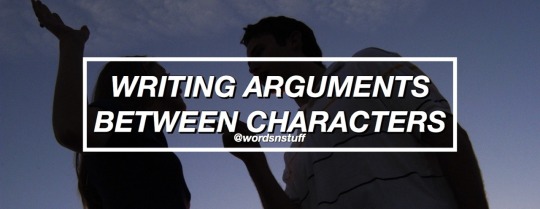
– Arguments in books are some of the most pivotal and important scenes in a narrative, but they’re also some of the most difficult because fights, in the moment, can seem much more dramatic in our heads than they would seem to an outsider. The great thing about writing is that you have the option to add context you wouldn’t have otherwise, which puts the reader in the characters’ heads and into the heat of the moment. I decided it was worth an article because it’s a very hit or miss kind of scene to pursue and I’ve received a lot of questions on the subject, so I’d like to answer (most of) them here. Enjoy!
Instigation
Which character began the fight? Sometimes fights start days before they actually turn into a heated argument, so if there is a build up to the scene, make sure you’ve taken the time to make that clear in the last couple scenes or chapters.
Sometimes, it isn’t actually clear to the characters what or who started the argument and it just sort of bubbles up over time or as events make the characters more confused, angry, scared, etc.
That’s another thing you need to know before you start writing an argument: what emotion is driving the characters to participate? Fear? Anger? Confusion? Sadness? Frustration? Tiredness? Repression of past feelings? Betrayal? In order to make the characters argue believably, you need to be in their headspace, and you can only do that if you know why they’re fighting in the first place.
Tone and pace
Build up
In order for an argument to be impactful to the reader, there needs to be some substantial escalation. Fights are like stories. There’s something that starts it, there’s rising tension, there’s a climax, and then there’s a cool down period before the resolution. Focus on the way you do the rising action especially, because the climax of the argument should be an “oh sh*t” moment.
Dialogue & Interraction
There are different types of arguments people can have. There’s the slow burn ones that the reader knows are coming, but are still really jarring when they come to pass. There are also the ones that seem like they’re out of nowhere if you don’t have context, but to someone who has been following maybe the past few days of the two people’s lives, they can tell that the actual subject of conflict isn’t what they’re really fighting about, but a deeper underlying issue they’ve both been struggling with. There are many ways an argument can go and feel to a reader, but a huge part of the subtext is how the two characters interact.
If your characters are screaming about a dish that was put away wet and left a ring on the stained cabinets, it will be fairly obvious to the reader, as that sort of interaction, at surface level, wouldn’t serve much of a story-telling purpose, and therefore will lead the reader to assume there’s more to it and search their arsenal of contextual evidence to find the real source of tension between the characters. This can also be accomplished through clues in dialogue, such as sarcasm in response to when something relating to the actual issue is mentioned, or a lull in the argument when the two characters realize that they’re not really talking about a stupid bowl, are they?
Resolution
How the argument ends could be used to shift where the reader believes the story is going from there on. The end could be very insignificant to your story, as fights between characters are often used to get across some key information about characters or context or introduce new conflicts, which brings up my next point.
Integration
Arguments are a really good opportunity to integrate lots of important information for your reader in a way that shows instead of telling. You can use arguments to relay lots of information to your reader, such as:
Character tendencies
Relationships between characters
Smaller conflicts
Foreshadowing
Associations that will be useful in future scenes
Shifts in tone
Changes in the direction of the story
Underlying issues that might come up later
and many more.
Some General Tips To Keep In Mind
Always ask yourself “would so and so really do this?”
During arguments, people’s responses will often be blended with their reactions. Their face will be shocked and their words will be sharp. Try to include these little mixes in order to make the pace faster and more suspenseful.
Most large arguments start with something smaller and less significant
A lot of the time, the reactions won’t be like “i can’t believe he said that to me”, they’ll be defensive and/or a shot back without much thought.
Most arguments, especially between two characters who generally like each other, will end with something like one person walking out of the room, one person deciding to sleep on the couch, or one person avoiding or ignoring the other. Most fights between characters who know and matter to each other don’t end with a punch in the face.
Arguments don’t usually end when they’re no longer yelling at each other.
Support Wordsnstuff!
If you enjoy my blog and wish for it to continue being updated frequently and for me to continue putting my energy toward answering your questions, please consider Buying Me A Coffee.
Request Resources, Tips, Playlists, or Prompt Lists
Instagram // Twitter //Facebook //#wordsnstuff
FAQ //monthly writing challenges // Masterlist
6K notes
·
View notes

